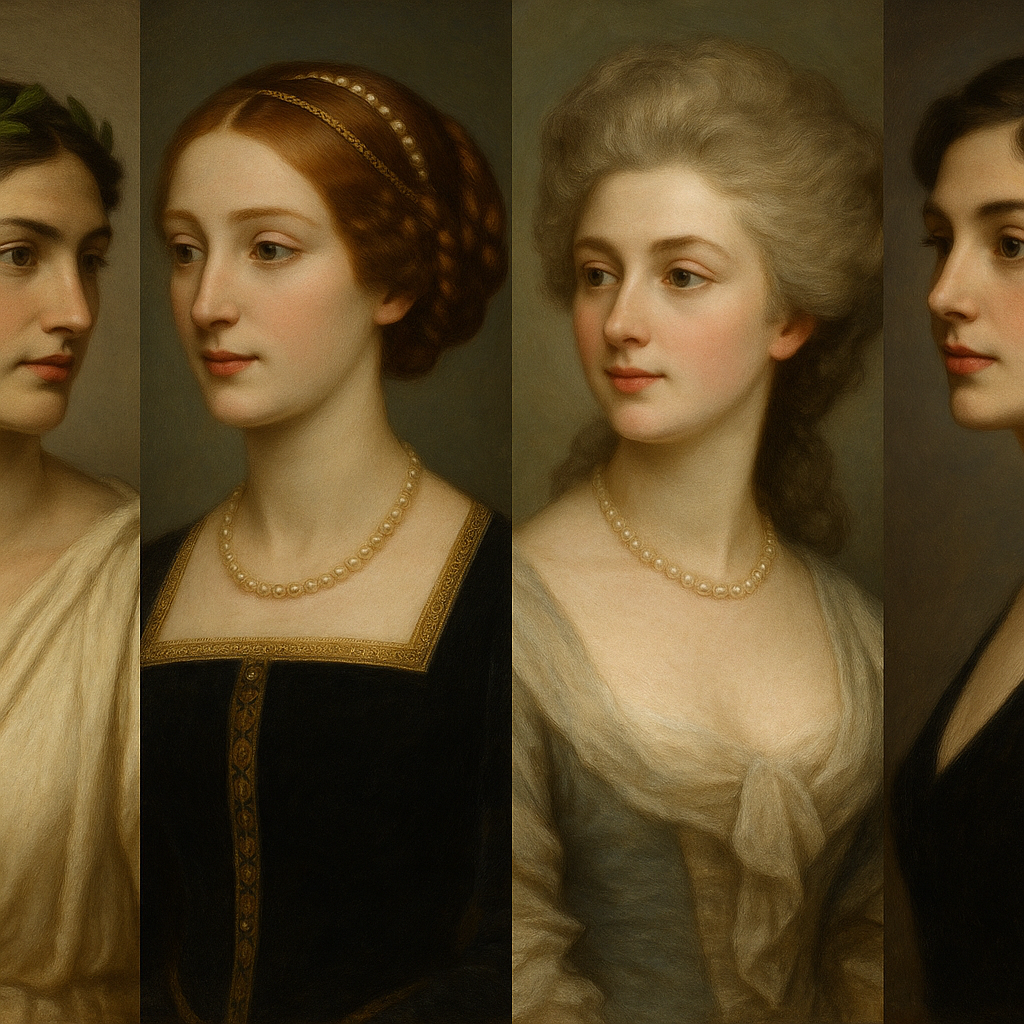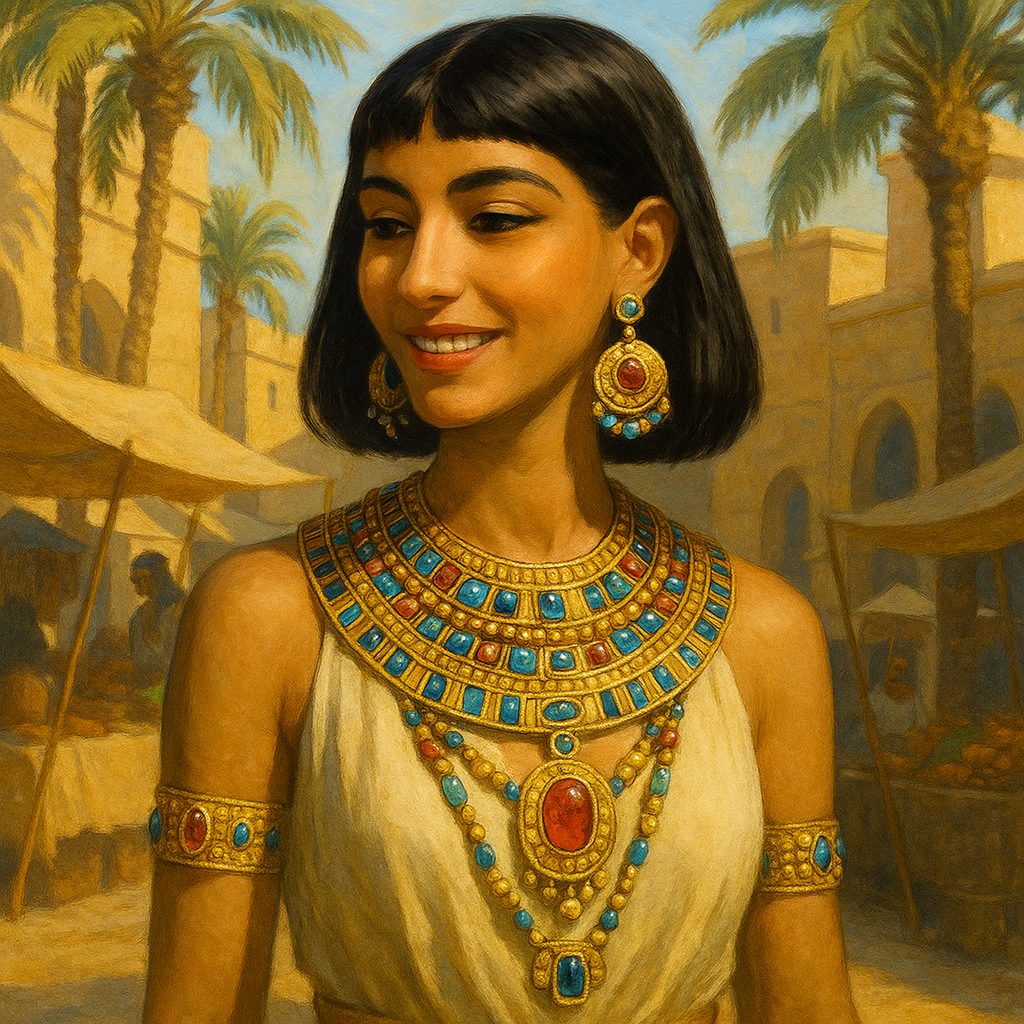
Women’s beauty through the ages: how jewelry choices have changed
Women’s Beauty Through the Ages: How Jewelry Choices Changed
Throughout human history, the pursuit of beauty and adornment has always held a special place. Since ancient times, women have enhanced their appearance with various forms of jewelry—from primitive beads to modern gemstones. Beauty standards and jewelry fashions evolved alongside civilizations, cultures, and eras, reflecting not only aesthetic values but also the role of women in society.
This article explores how perceptions of female beauty have changed over the centuries, how this influenced jewelry choices, and how modern women combine historical traditions with personal style. You will discover the most significant shifts in beauty standards, the symbolism of jewelry, and practical tips on how to express yourself through jewelry today.
Changing Ideals of Female Beauty: A Historical Overview
The perception of women’s beauty has always varied depending on the historical period, geographical location, and cultural values. Each era created its own unique aesthetics, shaping not only fashion but also jewelry trends.
Key Moments in the Evolution of Beauty Standards
Ancient Civilizations: Beauty was associated with fertility and health. In Egypt, dark, contoured eye makeup emphasized the gaze and also protected from the sun. Jewelry was abundant, bright, often crafted from gold and semi-precious stones, symbolizing protection and spiritual power.
-
Ancient Greece and Rome: Natural beauty and harmonious body proportions were admired. Women wore simpler but elegant jewelry—gold bracelets, earrings, and necklaces. Designs often depicted mythological motifs and carried religious significance.
-
Middle Ages (Europe): Christian morality shaped ideals. Beauty symbolized modesty and purity—fair skin, a soft face, and a high forehead were valued. Jewelry became more restrained, often with religious symbols, yet remained markers of social status. Wealthy women wore elaborate headpieces, heavy medallions with religious motifs, and gemstone rings.
-
Renaissance: A return to classical ideals. Feminine shapes, rosy cheeks, and fair hair were admired. Jewelry became luxurious and complex—pearl collars, massive medallions, and rings on every finger. Jewelry now served not only as wealth but also as art.
-
Baroque & Rococo: Expressive beauty and flawless skin were celebrated. Women wore ornate, gem-encrusted jewelry to match elaborate hairstyles and gowns. Hairpins, jeweled fans, and brooches gained popularity.
-
Victorian Era (19th c.): Beauty was linked with fragility and modest elegance. Sentimental jewelry flourished—lockets with hair strands, floral motifs, and cameos. Mourning jewelry made from black amber, onyx, and hematite became common.
-
Art Nouveau (late 19th – early 20th c.): Beauty ideals became freer, more organic. Jewelry featured flowing forms, colorful enamels, and semi-precious stones. Women embraced bolder, more original designs as part of personal style.
-
Art Deco (1920s–30s): Slim, athletic bodies and short hair were admired. Jewelry reflected geometric forms, bold contrasts, and exotic motifs. It symbolized women’s emancipation—less traditional, more daring.
Jewelry Through the Ages: When Fashion Met Self-Expression
The history of jewelry reveals not only aesthetic shifts but also the transformation of women’s roles in society. Jewelry was never just decoration—it expressed social status, religion, family ties, and even political views.
Archaeological findings show that prehistoric people already wore necklaces made of shells, bones, and stones. Creating them required skill, making them both status symbols and trade objects.
In Lithuania, archaeologists discovered impressive jewelry dating back to the Bronze Age. Baltic women adorned themselves with bronze bracelets, torcs, and headpieces, carrying both social and sacred meaning. Amber held special importance—the “gold of the Baltic” was valued throughout Europe.
In medieval Lithuania, jewelry symbolized wealth and power. Noblewomen wore elaborate gold and silver pieces adorned with imported gems, while commoners used simpler copper, bronze, glass, or local minerals.

Symbolism of Jewelry
Throughout history, jewelry carried deep symbolic meaning:
-
Wedding rings (from Ancient Rome) symbolized eternal love and fidelity.
-
Lockets with portraits or hair strands (Middle Ages, Renaissance) showed intimacy and attachment.
-
Crowns, tiaras, diadems symbolized authority and status.
-
Crosses and religious medals reflected faith, while amulets/talismans were believed to protect.
Traditional Lithuanian jewelry abounds with nature motifs—plants, suns, birds, animals. Amber, in particular, was believed to heal and protect from illness, misfortune, or the “evil eye”—a belief still alive today.
In the 19th century, sentimental jewelry often hid secret messages, with gemstone initials forming coded words. In the early 20th century, jewelry also became a tool of protest: suffragettes wore symbolic jewelry in purple, white, and green.
Modern Interpretations: Blending Tradition and Individuality
Today, women enjoy complete freedom in expressing themselves through jewelry, merging heritage with personal taste. Unlike past eras, there are no strict rules on what to wear for specific moments.
Modern jewelry emphasizes diversity and individuality. Women increasingly choose pieces that reflect values and identity—ethically made, vintage with history, or one-of-a-kind creations. Retro revivals are common: Art Deco, 1970s bohemian, or Victorian subtleties inspire today’s designers.
In Lithuania, there’s growing interest in Baltic motifs. Young creators reinterpret ancient symbols for modern contexts. Bronze bracelets with sun, moon, or earth motifs symbolize identity and ancestral ties.
Digital platforms like Instagram and Pinterest fuel inspiration and make global jewelry accessible. Ethical sourcing and sustainability are now vital concerns—women want to know where and how jewelry is made.
How to Choose Jewelry That Empowers You
-
Skin tone: Warm tones suit gold, copper, warm-colored stones; cool tones suit silver, platinum, blue, green, or violet stones.
-
Face shape: Round faces pair well with elongated/angular earrings; angular faces look softer with rounded jewelry.
-
Wardrobe palette: Neutral clothes pair well with bold jewelry; colorful clothes work with subtle pieces.
-
Personal meaning: Choose jewelry with significance—family heirlooms, travel souvenirs, birthstones, or symbols of your passions.
In Lithuania, personalized jewelry with initials, names, or dates is trending. Minimalist designs—subtle yet unique—are popular for daily wear.
Layering techniques (mixing necklace lengths, bracelet widths, stacking rings) can create dynamic, stylish looks even with a small collection.
Above all, jewelry should make you feel confident, strong, and authentic—whether minimalist modern or traditional ornate pieces.

Conclusion
Women’s beauty and jewelry choices through the ages reflect not only shifting aesthetics but also broader cultural, social, and technological changes. From rigid beauty standards and strict rules, we’ve moved toward inclusivity and individuality.
Today, jewelry is not only about beauty or status but also about identity, values, and self-expression. While trends evolve, one thing remains constant: women’s desire to highlight uniqueness and tell their stories through adornment.
FAQ
How have jewelry trends reflected changing beauty standards?
They always followed beauty ideals—at times emphasizing wealth with gemstones, at others embracing minimalist gold pieces reflecting modernist aesthetics.
What jewelry was popular among Lithuanian women in different eras?
From traditional amber necklaces in folk culture to Art Deco accessories in the 20th century, Lithuanian jewelry followed European trends while retaining local materials and symbolism—especially amber, bronze, and silver.
How to blend historical jewelry trends with modern personal style?
Experiment with vintage elements or reinterpret classics in a contemporary way, choosing jewelry that resonates with your identity—such as modern amber designs or minimalist Baltic-inspired pieces.
Why do beauty and jewelry trends keep changing?
They’re shaped by cultural, social, and economic factors—from art movements to technological advances and shifting gender roles. Each era develops its own aesthetics.
Is it worth investing in timeless jewelry in the age of fast fashion?
Yes—classic, high-quality pieces (pearls, gold chains) remain versatile and relevant, serving as long-term investments and family heirlooms for future generations.